Mechanical hard drives might seem like ancient technology, but there are still many places where they provide ‘good enough’ performance, and they easily offer the most amount of storage for the price. You do not always need the fast random access that the best SSDs are designed to provide, and an HDD’s sequential performance is plenty for streaming and other tasks. There are still a lot of hard drives to choose from, so we’ve tested multiple drives in our labs to help make sure you pick the right one for your needs.
While the best SSDs will give you the best experience for your operating system and boot drive and also offer much better application and game loading times than HDDs, they are still significantly more expensive per terabyte of storage space. However, NVMe SSDs also have a practical capacity limit per device, and motherboards have limited M.2 slots. Meanwhile, HDDs are already planned to hit 30TB and beyond, with 120TB on the horizon, and work with legacy SATA ports.
Best Hard Drives in 2023 at a glance (more info below):
Here’s the shortlist of our best HDD rankings below, but we have deeper breakdowns for these drives below, along with more picks for other categories.
Why you can trust Tom’s Hardware
Our expert reviewers spend hours testing and comparing products and services so you can choose the best for you. Find out more about how we test.
It is important to be aware of the drive’s form factor, with 3.5” being the most common for the best HDDs (this is the only type we cover). If you need 2.5”, your options are more limited, especially for capacity. Otherwise, your computer case’s ability to house a certain number of 3.5” drives might be your primary limitation.
The ubiquitous SATA interface is used for desktop PCs, and most motherboards have ample available ports, which makes expansion easy. If you’re shopping for an HDD, you’re probably looking for the lowest possible cost per TB, but you should consider performance and support for certain applications. There are a few potential performance pitfalls when buying a new HDD, and the type of recording technology is one of the most important factors. We only recommend conventional magnetic recording (CMR) drives and not shingled (SMR), as the latter comes with performance and operational caveats.
For performance, HDDs are also often gauged by rotations per minute (RPM), which is usually a direct indicator of performance. The RPM value impacts sequential transfers as well as random access latency. Lower RPM drives tend to be quieter and more efficient, while higher RPM drives have better performance. There are also variable RPM drives that try to achieve the best of both worlds. Power draw, heat, and noise are factors related to performance.
HDDs additionally have an amount of DRAM to help temporarily cache data. This amount of cache generally scales with the capacity of the drive. More cache is, of course, better, but if it comes as a trade-off — for example, instead of having a support service — then you should consider your priorities carefully when making a purchase.
When choosing one of the best HDDs, you should balance these factors with your intended usage and, of course, around your budget. You will want specialized drives for NAS, surveillance/DVR/NVR, raw storage for media and backups, or for heavier workloads. Certain drives will offer a better bang for the buck if you just want the extra capacity, or you may require a lower RPM drive to avoid the noise of faster drives. See our list below for more details.
Best Hard Drive You Can Buy in 2023
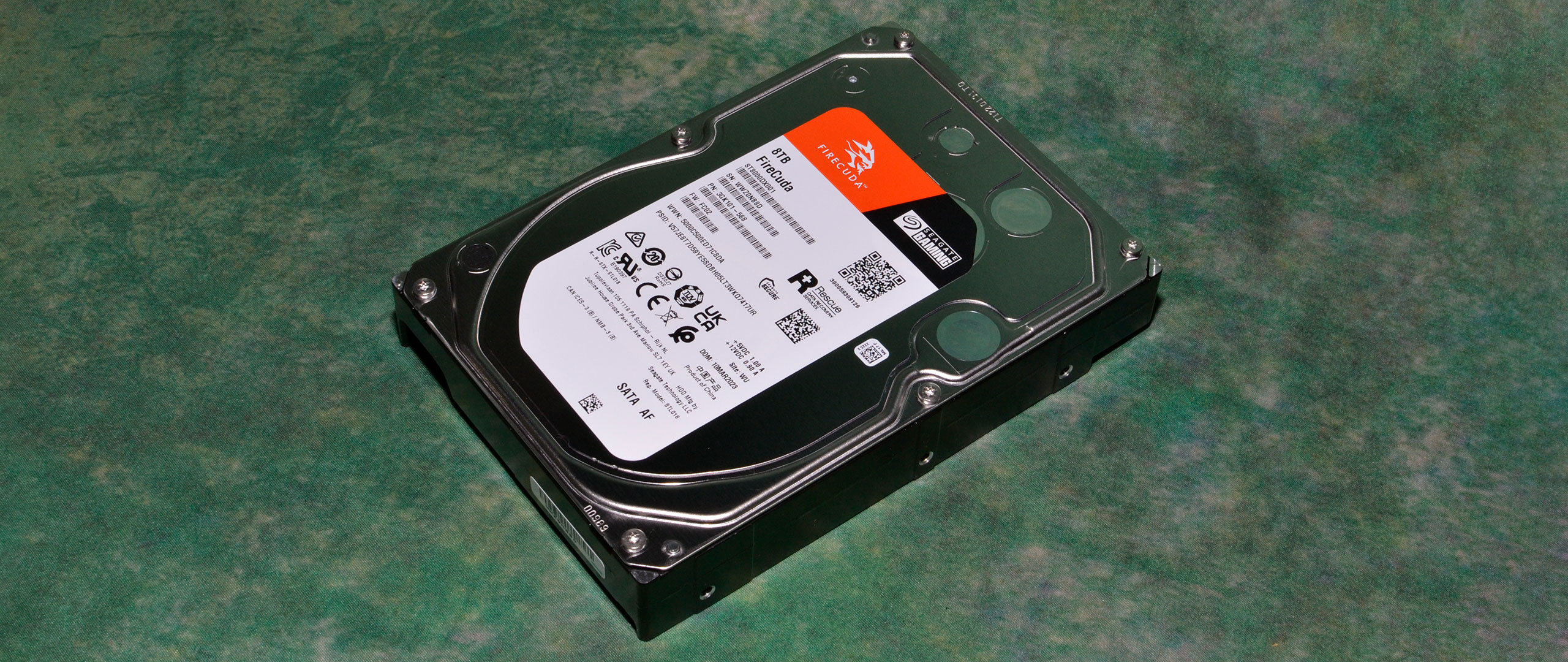
The Seagate FireCuda is the best hard drive for both high-end desktop PCs and workstations alike. The FireCuda is Seagate’s analog to WD’s Black and comes with up to 256MB of cache, a 7200-RPM spindle speed, CMR technology, and a strong five-year warranty. The drive isn’t quite as fast as the WD Black, with a maximum sustained data rate of 260 MB/s. The FireCuda is also only available at 4TB and 8TB, although these are the most popular capacities and are also the “sweet spots” for the best price-to-performance and capacity ratios.
Where the FireCuda shines is Seagate’s three-year Rescue Data Recovery Services. If your drive fails, Seagate’s lab will attempt one data recovery attempt and will send you any recovered data in an encrypted form. This is potentially a strong selling point, although important data should always be backed up. This combination of factors makes the FireCuda the top choice if you want a quality, high-performance HDD for home PC or professional workstation use.
Read: Seagate FireCuda 8TB HDD Review
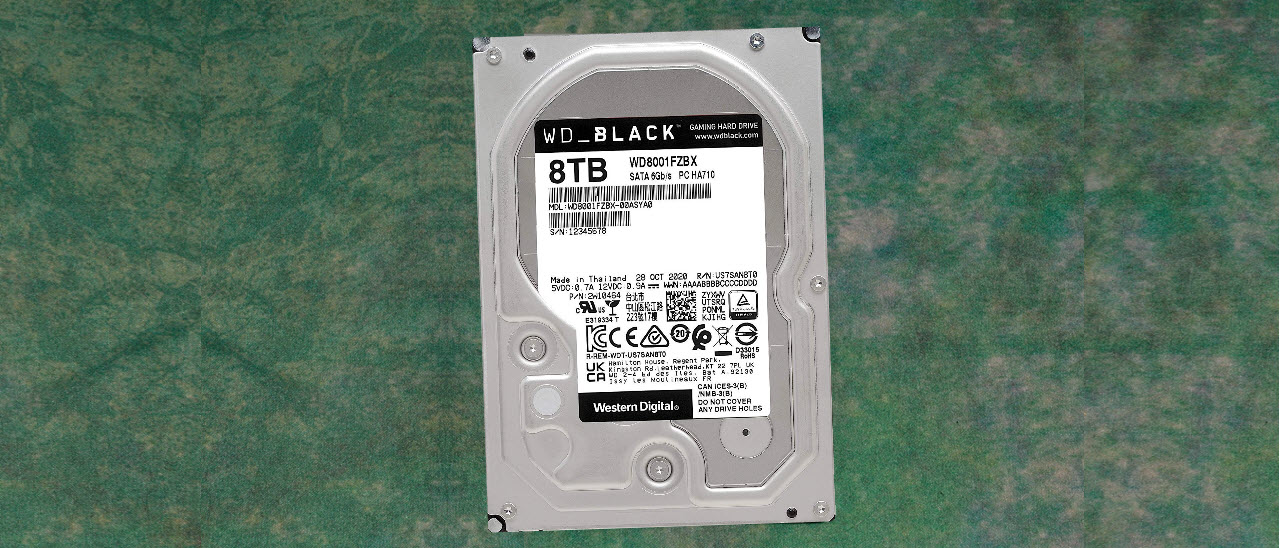
The WD Black is and has been an extremely popular, high-performance hard drive. It’s an easy way to get guaranteed top performance with a 7200-RPM spindle speed. At 4TB and up, 256MB of DRAM cache is an option that can help elevate it further over the competing WD Blue HDD. The Black’s performance as a whole is higher, and the warranty is much better at five years instead of two.
The WD Black’s biggest drawback, aside from potentially being noisier, is its price. The 8TB Black is significantly more expensive than the 8TB Blue. It’s worth jumping up if you want the very best performance, and it’s also probably worth paying more for the longer warranty period. To save some money, you can go with the 128MB cache version.
Read: Western Digital 8TB Black HDD Review: Not Back in Black
Best Budget Hard Drive in 2023
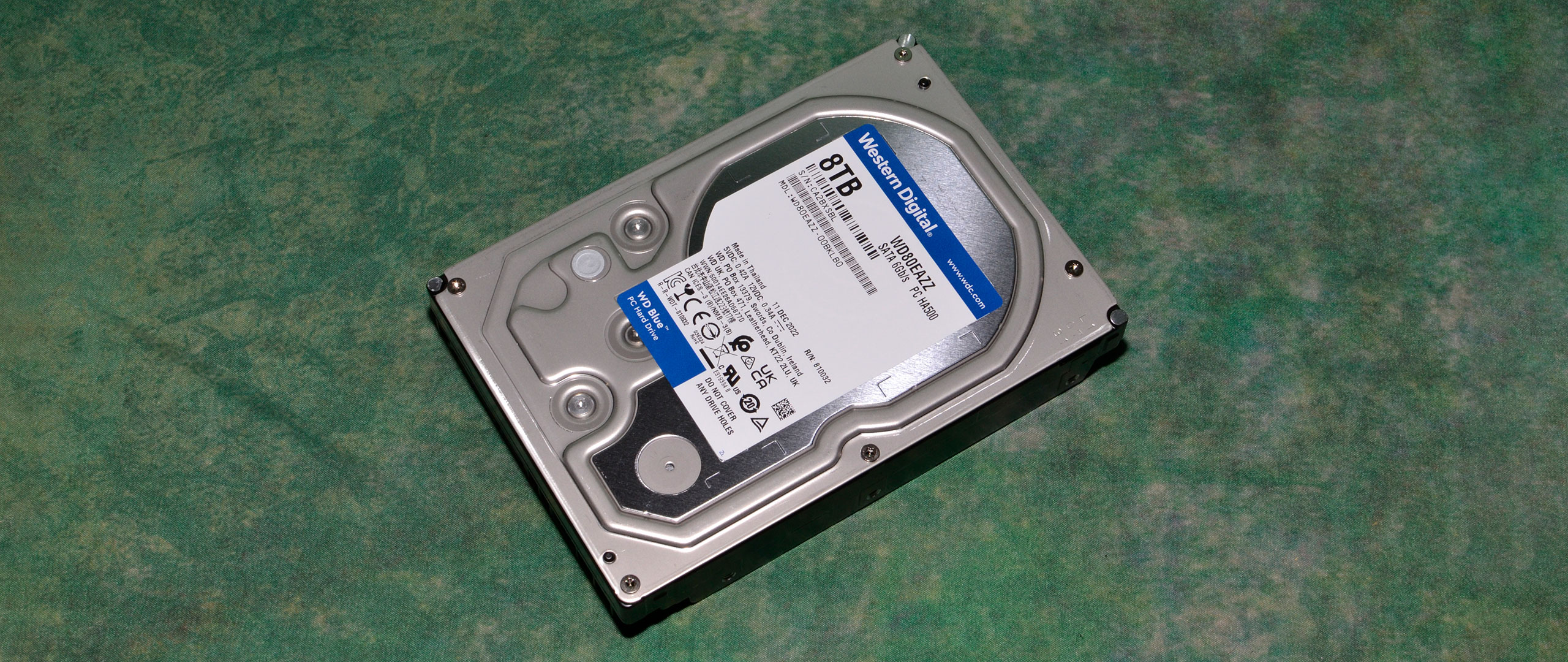
The WD Blue is the best budget hard drive you can find on the market. This drive is the perennial budget HDD favorite and is widely available, has a decent range of capacity options, and doesn’t break the bank. The 8TB model is currently the best and offers the best bang for your buck without many compromises. This particular capacity uses CMR technology with a slightly faster 5640-RPM capable of serving up to 185 MB/s of throughput. This is enough to get the job done without adding more unwanted noise or heat into your build.
This drive does come with some trade-offs, though. The 8TB model has only 128MB of cache, down from 256GB for the 2TB-6TB models, and like the rest of the lineup, it only comes with a two-year warranty. If you’re just looking to add space inexpensively, though, this is the way to go; just be aware that some capacities come in both an SMR and CMR variant. We recommend that you stick with the CMR versions of the drive.
Read: WD Blue 8TB HDD Review
Best NAS Hard Drive in 2023
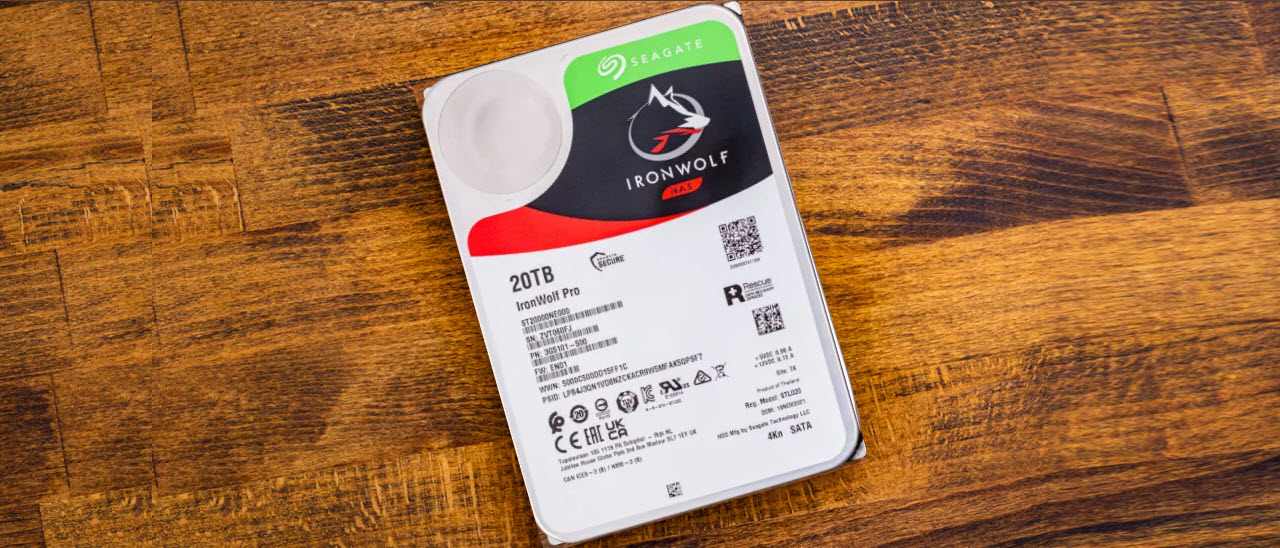
The Seagate IronWolf Pro is a strong performer posting faster speeds than the competing WD Red Pro in many of our tests. We like Seagate’s three-year data recovery services as they report a high record of success, and data recovery is traditionally very expensive.
The IronWolf Pro has larger caches for many of its models with the same storage capacity, including 20TB, and also a corresponding workload rating increase, from 300 to 550 TB/year.
Read: Seagate IronWolf Pro 20TB Review
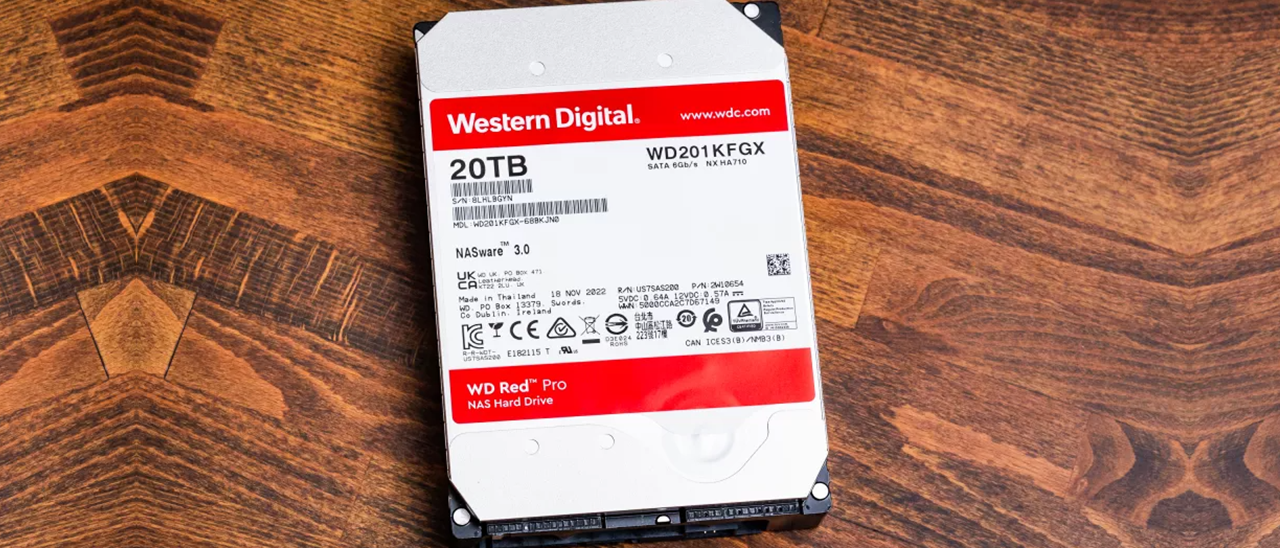
The 20TB Red Pro NAS HDD is a worthy alternative drive for NAS usage. It has strong performance in random workloads thanks to the 7200 RPM spindle speed, and it also comes with 512MB of DRAM cache for the 14TB and larger models. This is backed by a five-year warranty, although the 300 TB/yr workload rating is merely average.
This hard drive has very similar specifications and pricing as the Seagate IronWolf Pro, which has the advantage of a slightly higher maximum sustained write speed and Seagate’s three-year rescue plan. The Red Pro has a larger DRAM cache, though, and its OptiNAND technology gave better 4KB results, so its better for workloads that have small I/O.
Read: WD Red Pro 20TB HDD Review
Best Enterprise Hard Drive in 2023
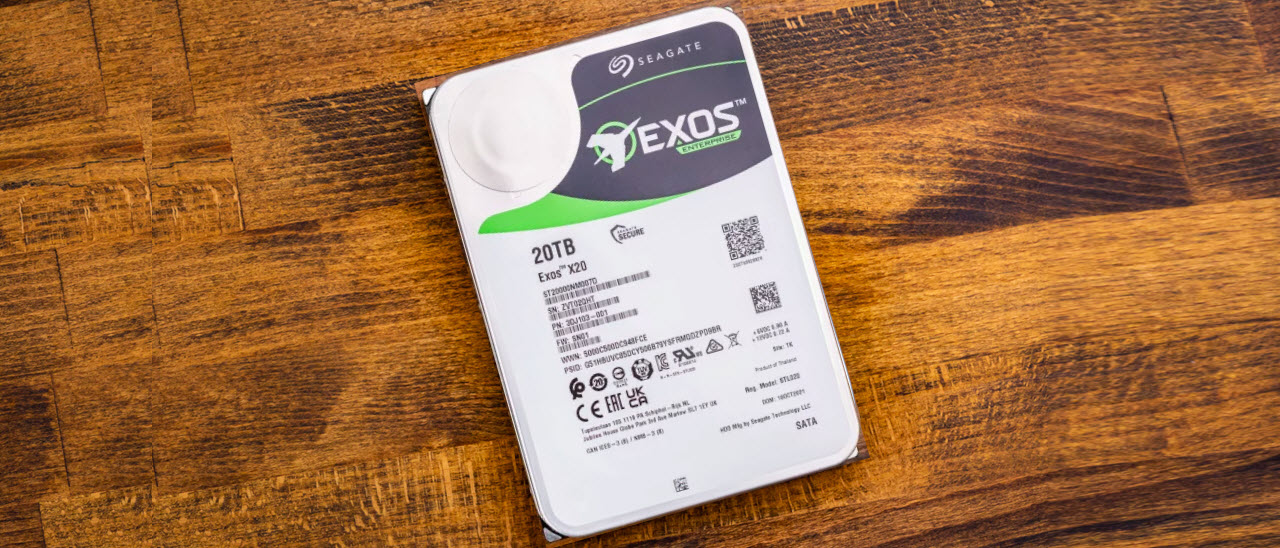
Seagate’s Exos X20 drive is very similar to its IronWolf Pro line. Its higher workload rate and MTBF specification suggest it is more for enterprise use, however. It doesn’t reach 22TB like the WD Gold, and also has less cache. That aside, the performance and warranty are both good, so this is a choice that comes down to pricing.
The Exos X20 does not have the three-year recovery plan that other Seagate drives on this list have, which further hints that it’s a better choice for data and cloud centers. This doesn’t preclude its use in NAS systems or for other applications, but it won’t be as cost-effective in those scenarios.
Read: Seagate Exos X20 20TB HDD Review
Best Surveillance and NVR Hard Drive in 2023
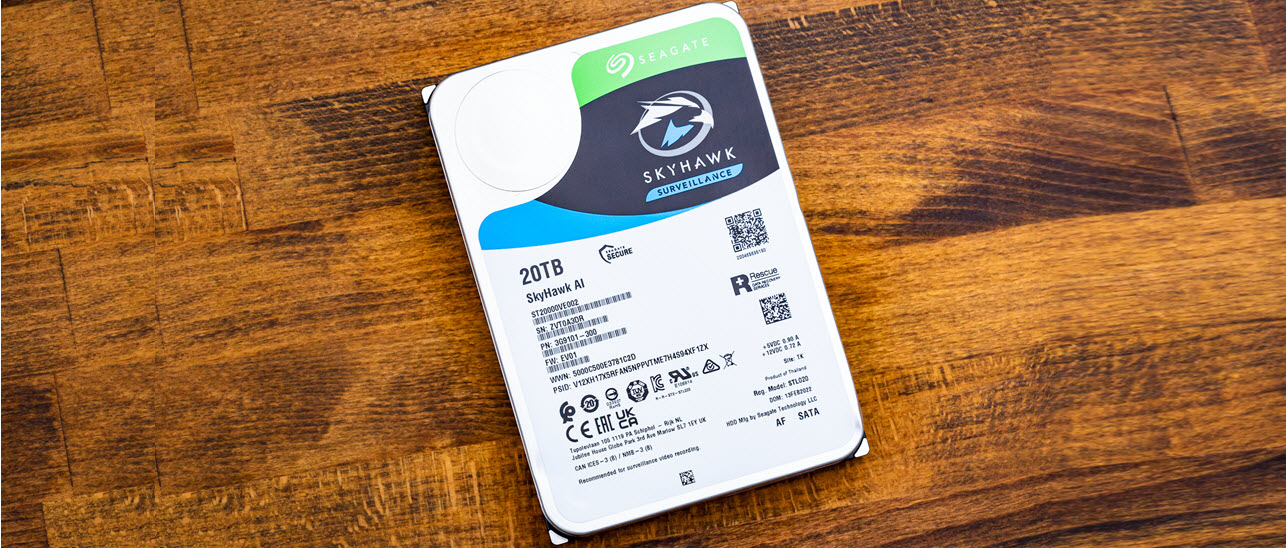
The Seagate Skyhawk AI HDD is designed with “AI” firmware to improve the drive’s ability to handle recording, video analysis, and GPU analytics workloads. This includes up to 64 HD video streams and 32 AI streams with zero dropped frames. This is combined with a robust warranty, including a high workload rate and Seagate’s three-year data recovery service.
This makes it a great pick for surveillance and NVR work, but WD’s Purple Pro is quite similar with twice the cache at this capacity. While these drives are comparable otherwise, we give the nod to the SkyHawk AI because of Seagate’s Rescue Services plan. This seems to be a particularly worthwhile feature for the expected use cases.
Read: Seagate SkyHawk AI 20TB HDD Review
Benchmarks / How We Tested
We utilize a variety of benchmarks to fully test an HDD and characterize its performance and consistency. HDDs are still relatively popular for holding game libraries, particularly as games continue to get larger. While this means longer loading times than you get with SSDs, it can be useful to prevent having to redownload large games, and HDDs are also fine for temporarily putting games “on ice” as you cycle through other titles. Our 3DMark benchmarks give us an idea of gaming performance, although it’s best to go with an SSD for multiplayer and regularly-accessed games.
PCMark 10, which is related to 3DMark, focuses on measuring performance in productivity and standard desktop PC applications. While you don’t want to run big applications off of hard drives, there are many cases where HDDs must be used, particularly with content creation. HDDs also make for good “cold” storage as an archival backup, especially for larger source files that may have less or no compression. HDDs are also popular for recording gameplay as they have enough speed to keep up with even decent bitrates.
The most common use for hard drives, though, is simple file transfers. Our DiskBench test estimates transfer performance with a real-world workload that is useful for calculating how long a transfer could take. Hard drives have consistent performance and will hit their maximum sustained speed at QD1 with large enough I/O, which is illustrated in our ATTO benchmark results. This is particularly useful for showing differences in technology and capacity as drives get bigger and faster.
Crystal Disk Mark also demonstrates this with its sequential performance results but also at a higher queue depth if you’re doing multiple transfers at once. For maximum sustained write performance, we show write saturation characteristics as well. Crystal Disk Mark further reveals 4KB performance which is latency-intensive, a result impacted by RPM and other drive characteristics, although HDDs are generally quite slow with such small I/O.
We also test power consumption and temperature. Power consumption will vary with drive performance, RPM, and more, and it’s important to look at four different cases: maximum power draw, average power draw, idle power draw, and workload efficiency. Power usage can add up with multiple drives. Temperature is also an important metric for hard drives, as overheating is a common cause of failure, particularly during sustained workloads.
MORE: Best SSDs
MORE: Best External SSDs and Hard Drives
MORE: How We Test HDDs And SSDs
MORE: All SSD Content






